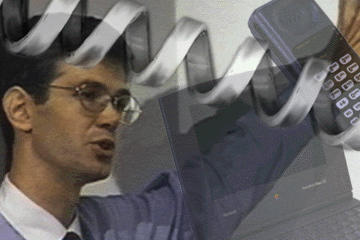
Wireless communication systems have existed for many years, yet as increasingly
complex systems are built, we encounter problems that were never dreamed
of by early wireless pioneers. Modern cellular systems use base stations
which cover a specific geographical region, called a cell. Problems
arise in deciding when to switch a user from one cell to another, in dealing
with interference between cells, and in tracking the user. Even with these
difficult problems, wireless communication has a strong, and perhaps lucrative,
future. Attributes such as the freedom to communicate and move,
and the ability to bring communications to remote locations without cable
make this technology an indispensible part of our society.
This video course is composed of material taken from a short course on
wireless communication given by J.P. Linnartz recently at U.C. Berkeley.
In it, he discusses the problems and future of wireless communications.
Module Credits
First video fragment
All video flies in SMIL document
This presentation was originally created in QuickTime. (See edition 1999 of the CD-ROM)
In order not to exceed the storage capacity of the CD, we had to compress
video aggressively. These pages contain Real-Video. We apologize for the technical quality.



